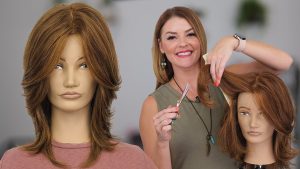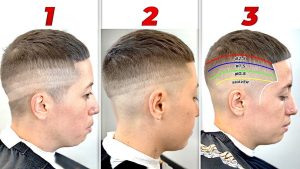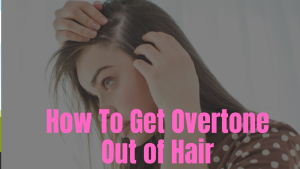Hair loss is a very common problem, affecting both men and women. The most common cause of hair thinning or baldness in males tends to be genetics; however, it can also occur due to hormones changes during puberty, for example, when testosterone levels rise – this causes physical restructuring that leads directly to thinner strands becoming visible with time due to the fact there aren’t sufficient gathers where typically you would anticipate them on top.
Most people think they’re losing all their hairs from one place, but actually, even just scalps can produce less vellus (very fine) fibres than normal if we don’t treat these issues early enough, then problems arise.
According to Dr Wong, “Each hair follicle on our scalp undergoes three stages of life cycle”. These stages include:
- Anagen – The active growing stage of your hair can occur between 2-7 years, at some stage in which it becomes longer and thicker.
- Catagen – This is when the hair follicle moves into a short transitional phase when it stops growing, followed by a resting stage called telogen, which lasts around 3 months.
- Telogen: The process of natural hair replacement starts with telogen, in which the old cells are pushed up towards the skin surface before they are shed and replaced by new ones.
If you’re noticing more hair in your brush than usual, it’s normal to wonder why your hair is falling out. There are many reasons why hair loss can occur, and it’s often difficult to pinpoint the exact cause. However, there are some common causes of hair loss that you can be on the lookout for.
Read More About How Often Should You Wash Your Hair

Symptoms of hair loss.
- Progressive thinning of the head: Hair loss can happen at any age, but it often occurs with aging. This is known as hair going into retreat in men, while women’s heads broaden slightly over time. Hair thinning or greying happens when our strands become finer than normal due to genetics and environmental damage, which lead them not to produce enough protein for healthy growth; these problems affect both males’ locks (like beards) AND females’.
- Bald spots: Hair loss can be a worrying sign of serious medical conditions. It might not always show up on your head, but you’ll notice it when hairs start falling out in patches everywhere!
– circular bald spots from unhealthy sebaceous glands.
– patchy thinning around the beard area caused by poor circulation.
– painful itching before hair fall occurs, which is also related to scalp issues
like infection or electrolyte deficiency.
- Sudden loss of hair: When you’re stressed, your body may release a hormone called cortisol, leading to hair loss. It’s normal for this type of thinning -it’ll grow back after the stressful event is over!
- Full loss of hair in the overall body: It is possible for some medical treatments, such as chemotherapy treatment for cancer can result in the loss or thinning all over your body. The hair usually grows back after these conditions have passed.
Causes of hair loss
- Vitamin deficiencies: If you’re not getting enough vitamins and nutrients in your diet, this can lead to your hair follicles weakening and eventually shedding hair. Make sure you’re eating a balanced diet with plenty of fresh fruits and vegetables to prevent this. You may also consider taking a daily multivitamin to ensure you’re getting all the nutrients you need.
- Stress: When you’re under stress, your body goes into survival mode and starts conserving energy. This can lead to your hair follicles shrinking and shedding hair. To reduce stress, consider taking up yoga or meditation. You may also want to talk to your doctor about ways to manage stress levels.
- Medical conditions: Certain medical conditions can also cause hair loss. For example, if you have a thyroid condition, this can cause your hair to thin out. If you think a medical condition may be causing your hair loss, it’s important to talk to your doctor so they can diagnose and treat the underlying condition.
- Hormonal changes: This may be the case if you’re experiencing menopause, pregnancy, or thyroid problems. When you have any of these conditions, it’s crucial to speak to your health provider about handling them and decreasing the chance of hair loss.
- Hairstyles and treatments: Some hairstyles and remedies can also result in hair loss. If you often wear your hair in a tight ponytail or bun, this can strain your hair follicles and lead to shedding. Chemical treatments such as bleaching and straightening can damage your hair and make it more likely to fall out. If you’re concerned about hair loss from styling or treatment, it’s important to talk to your stylist or doctor to determine what you can do to minimize the risk.
- Telogen effluvium: This happens whilst the natural growth cycle of your hair is disrupted. This could be as a result of physical or emotional stress, a change in hormones, speedy weight loss, or even something as easy as beginning a new medication.
- Alopecia areata: This is an autoimmune condition that can cause patchy hair loss on the scalp, face, and elsewhere on the body. Alopecia areata is assumed to happen due to genetic and environmental conditions.
In some cases, hair loss can signify a more serious underlying condition, such as an autoimmune disease or iron deficiency. If you’re concerned about hair loss, it’s important to see your doctor for a complete evaluation. They can perform tests to determine the cause of your hair loss and recommend treatment options.
How to prevent hair loss.
- Gently brush and comb your hair when it is wet to avoid pulling out hairs. A wide-toothed comb can help prevent this.
- Harsh treatments such as hot rollers or curling irons that might damage the strands due to their tightness against one another, causing breakage, should be avoided at any cost!
- Limit the use of rubber bands for hairstyles as they could cause tension on the hair, leading to hair loss.
- Too much exposure to the sun can cause drying of hair, leading to hair loss. Sunscreen is a great way to protect your skin from the harmful effects of U rays, but it can also help prevent hair damage.
- The risk of losing your hair increases if you’re a smoker. Avoid smoking if you want to protect your hair.
- Chemotherapy could make your hair fall out, however there may be a method to prevent the loss. A cooling cap may help prevent this and protect you against any side effects that come with treatments like nausea or vomiting!
If you’re concerned about hair loss, it is crucial to see your physician to rule out any underlying clinical conditions. Once any underlying conditions are treated, several treatments are available for hair loss, including medication, surgery, and lifestyle changes. With the proper treatment, you may regain your confidence and begin to enjoy your existence once more!







